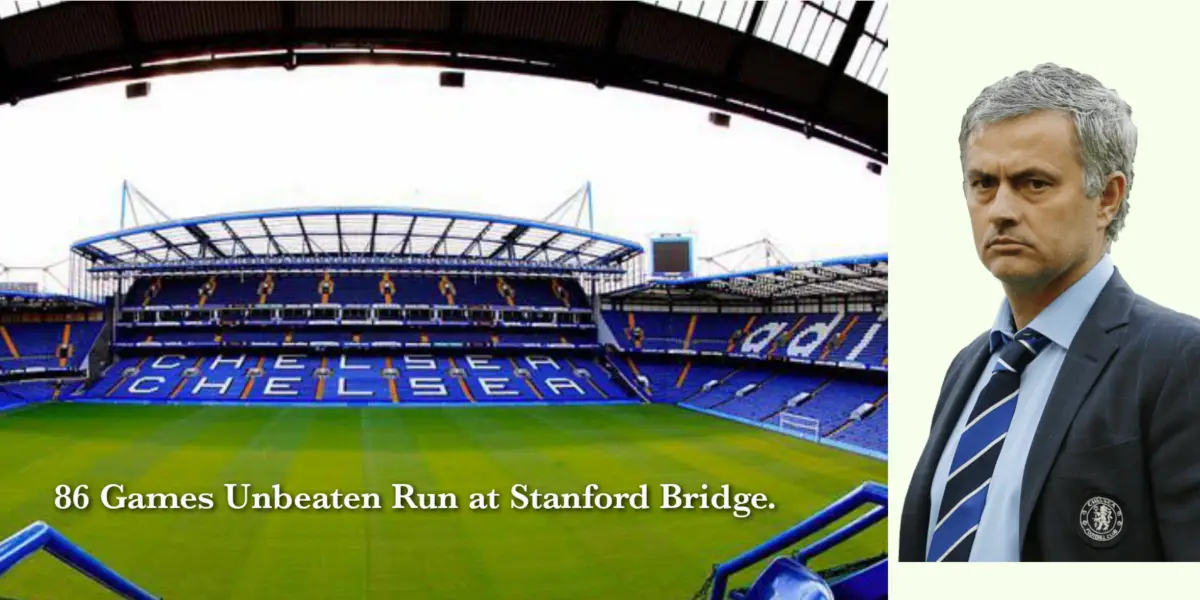The Premier League, widely regarded as one of the most prestigious football leagues in the world, captivates fans with its high-intensity matches and fierce competition. However, amidst the thrilling domestic action, there are moments when the league takes a brief pause – the international break. In this comprehensive guide, we delve into the concept of the international break in the Premier League and highlight its significance for fans.
International breaks occur when national teams convene to participate in international competitions, such as World Cup qualifiers, European Championships, and friendly matches.
During these breaks, Premier League clubs temporarily suspend their domestic campaigns. Players then join their respective national teams to represent their countries. This hiatus, often spanning a week or two, brings together players from various clubs, who become teammates on the international stage.
Understanding international breaks is crucial for Premier League fans. It allows them to gain insights into the dynamics that shape the league and appreciate the global impact of football. While international breaks provide opportunities for players to showcase their skills on a grand stage, they also introduce uncertainties and challenges for clubs, managers, and fans alike.
Stay tuned as we uncover the complete guide to international breaks in the Premier League. Hence, shedding light on the moments that shape the destiny of clubs, players, and fans alike.
What is an International Break?
An international break refers to a designated period in the football calendar when domestic leagues, including the Premier League, temporarily halt their fixtures to accommodate international football competitions.
During these breaks, players from various clubs come together to represent their respective national teams in matches, tournaments, and qualifying campaigns.
Definition and Purpose of International Breaks
International breaks serve as a crucial component of the football ecosystem. It facilitates the organization of international competitions and allows players to represent their nations on the global stage.
These breaks allow national teams to assemble and train, fostering team cohesion. It also allows coaches to work with their players in a concentrated period.
The purpose of international breaks extends beyond mere matches and tournaments. They play a vital role in shaping international football’s landscape. Hence, allowing nations to compete for qualification in prestigious tournaments like the FIFA World Cup and the UEFA European Championships.
International breaks also feature friendly matches, enabling national teams to fine-tune their strategies and test players against quality opposition ahead of major competitions.
Duration and Frequency of International Breaks in Premier League
The duration and frequency of international breaks in the Premier League can vary depending on the football calendar and the international competitions.
Typically, international breaks last for approximately one to two weeks, providing players with time to join their national teams, participate in training camps, and compete in international fixtures.
The Premier League season is carefully structured to accommodate these breaks. They are strategically placed at specific intervals throughout the season, ensuring that clubs have sufficient time to regroup and prepare for the challenges ahead. International breaks occur several times during a Premier League campaign, with the number of breaks determined by the international football calendar.
The frequency of international breaks in the Premier League can be influenced by factors such as World Cup qualifiers, continental championships, and international friendly matches.
These breaks offer a chance for players to represent their countries and compete against fellow professionals from around the world, showcasing their skills and contributing to the global spectacle of football.
International Breaks in Premier League: Schedule for the 2023/24 Season
The Premier League season of 2023/24 will feature several international breaks, offering a mix of qualifying matches, friendly encounters, and prestigious tournaments. Here is a breakdown of the international breaks for the upcoming season:
September Break: 04-12, 2023
- This first international break of the 2023/24 season follows the summer transfer window’s conclusion.
- England will continue their Euro 2024 qualifying campaign, facing Ukraine on September 9.
- A highly anticipated match awaits as England visits Hampden Park to take on Scotland in the 150th Anniversary Heritage Match, celebrating one of the oldest international football rivalries.
October Break: 09-17, 2023
- The second international break of the season occurs in mid-October.
- England prepares for their Euro qualifier against Italy on October 17 with a friendly against Australia at Wembley four days earlier.
- Noteworthy fixtures during this break include Spain versus Scotland and the Netherlands versus France.
November 13-21, 2023
- The final international break 2023 features play-off qualifiers for the Euros and international friendlies.
- England hosts Malta on November 17, followed by an away fixture against North Macedonia three days later.
- Scotland faces Norway in a crucial match at Hampden Park as they aim to stay in contention for Euro 2024 qualification.
March 18-26, 2024
The first international break of 2024 is anticipated to be a crucial period for UEFA countries to fine-tune their squads ahead of the Euro 2024 tournament.
June-July 2024 – UEFA European Championships 2024:
- The June-July period will witness the highly anticipated Euro 2024 tournament taking place in Germany.
- Matches will be played from June 14 to July 14, with Berlin’s Olympiastadion hosting the final.
- Participating nations, including Germany, France, Spain, and many more, will compete for the coveted trophy.
Outside of the Premier League, the international break in June-July 2024 will also feature other international tournaments such as the CAF African Cup of Nations, the AFC Asian Cup, the CONCACAF Gold Cup, and the Women’s World Cup.
The 2024/25 season will bring international breaks in September 2024, October 2024, and November 2024. These breaks will likely contribute to the build-up for the 2026 World Cup, scheduled to be held in North America.
As the Premier League intertwines with international football, these breaks allow fans to witness their favourite players representing their nations and competing in significant matches.
The international breaks throughout the 2023/24 season will undoubtedly shape the course of domestic and international football, bringing moments of celebration, rivalry, and anticipation to fans worldwide.
Summary of the 2023/24 International Break
| International Break Dates | Key Matches/Events |
|---|---|
| Sep 04-12, 2023 | England vs Malta (Euro 2024 qualifier), North Macedonia vs. England (Euro 2024 qualifier). |
| Oct 09-17, 2023 | England vs Australia (Friendly), England vs Italy (Euro 2024 qualifier). |
| Nov 13-21, 2023 | England vs Malta (Euro 2024 qualifier), North Macedonia vs England (Euro 2024 qualifier). |
| Mar 18-26, 2024 | UEFA countries’ preparations for Euro 2024. |
| June-July 2024 | UEFA European Championships 2024, CAF African Cup of Nations, AFC Asian Cup, CONCACAF Gold Cup, Women’s World Cup. |
| Sep 04-10, 2024 | Start of the 2024/25 season international break. |
| Oct 07-15, 2024 | Second international break of the 2024/25 season |
| Nov 11-19, 2024 | Final international break of 2024 |
The Impact of International Break on the Premier League
International Breaks in Premier League football significantly impact various aspects of the league. Here are the key effects to consider:
Disruption of league fixtures and scheduling challenges
- The International Breaks in Premier League can disrupt the regular flow of league fixtures.
- Matches are postponed, and clubs may face congested schedules as a result.
- Rescheduling matches can be challenging, especially when teams have players representing different national teams.
- The interruption can disrupt team rhythm and affect the consistency of performance.
Effects on player fitness and Injuries
- The International Breaks can have both positive and negative effects on player fitness.
- Players representing their national teams gain valuable international experience and exposure.
- However, the increased workload and travel during these breaks can lead to fatigue and an increased risk of injuries.
- Clubs often face concerns about the fitness and availability of their key players after international duty.
Read More:
Injury-Prone Football Players of All Time
Why Do Players Fake Injury?
Influence on team dynamics and momentum
- International Breaks can disrupt the team dynamics and momentum built during the league season.
- When players are away on international duty, the remaining squad members may lack the same level of cohesion and understanding.
- Upon returning, players may need time to readjust to the team’s style of play. This potentially impacts their performance in subsequent matches.
- Teams with many players called up for national duty may face more significant challenges in maintaining their momentum.
International players’ role in their respective national teams
- Premier League clubs often have a considerable number of international players who represent their respective national teams.
- These players are responsible for competing in crucial international fixtures, such as World Cup qualifiers or continental championships.
- The performance and involvement of Premier League players in their national teams can impact their confidence and form upon returning to their club.
- International Breaks allow players to showcase their skills on a global stage. But it can also create additional pressure and expectations.
Premier League Managers and International Breaks
Premier League managers hold varying perspectives on international breaks and employ different strategies to cope with their challenges. Here are the key points to consider:
Managers’ perspective on international breaks
Managers have mixed feelings about international breaks. While they recognize the importance of players representing their countries, they also acknowledge the disruption these breaks bring to their squad’s rhythm and training routines.
Some managers appreciate the opportunity for players to gain international experience, while others express concerns about the increased risk of injuries and player fatigue due to the additional workload.
Strategies employed by managers to cope with international breaks
To mitigate the effects of international breaks, managers employ various strategies. They focus on maintaining open lines of communication with national team coaches to monitor the fitness and workload of their players.
Additionally, managers may provide personalized training plans for players returning from international duty to help them recover and reintegrate smoothly into the club’s system.
Some managers also schedule friendly matches or arrange training camps during breaks to keep non-international players engaged and maintain team cohesion.
Balancing player fatigue and squad rotation
Managers face the challenge of balancing player fatigue and the need for squad rotation during international breaks. They must carefully manage the playing time of key players representing their national teams to avoid excessive workload and minimize the risk of injuries.
Squad rotation becomes crucial to ensure the availability of fresh and fit players throughout the demanding Premier League season.
Managers may rely on their squad depth and utilize fringe players or academy prospects to give regular starters some rest during this period.
Impact of International Break on Premier League Table and Title Race
An international break in the Premier League can significantly impact the league standings and the title race. Here’s an examination of how these breaks affect the table and the top teams:
Disruption in team rhythm and momentum
International breaks disrupt the rhythm and momentum of teams competing at the top of the table.
The gap between fixtures can interrupt a team’s flow and affect their performance upon returning to domestic action. This disruption can result in dropped points, leading to a shift in the league standings.
Player fatigue and injuries
International breaks increase the risk of player fatigue and injuries. The additional workload and travel can leave players physically and mentally drained. This potentially impacted their performance upon returning to the Premier League.
Injuries sustained during international duty can also weaken teams, forcing managers to adjust their starting lineups.
Case studies of previous seasons
a) 2019/20 season
The international break in November 2019 significantly affected Liverpool’s title charge. During that break, key players like Mohamed Salah, Virgil van Dijk, and Joe Gomez picked up injuries while on national duty.
Upon their return, Liverpool experienced a dip in form and dropped points, allowing Manchester City to close the gap in the title race.
B) 2017/18 season
In the same season, Manchester City’s title-winning campaign faced a challenge after the March 2018 international break. Their key player, Sergio Aguero, suffered a knee injury while representing Argentina. This setback disrupted City’s momentum, and they experienced a dip in form, resulting in dropped points.
These examples illustrate how international breaks can directly impact the title race and the fortunes of top teams. Injuries to key players and disrupted team dynamics can create vulnerabilities opponents can exploit, leading to the reshuffling of the Premier League standings.
Overall, international breaks pose both challenges and opportunities for teams competing for the Premier League title. The disruption in team rhythm, player fatigue, and injuries can significantly impact the table and the title race.
Managers must carefully manage their squads during these breaks to mitigate the potential negative effects and maintain their position in the highly competitive Premier League.
Fans’ Perspective: Love and Hate Relationship with International Breaks
International breaks in the Premier League evoke a mix of emotions among fans, encompassing excitement, frustration, and varied experiences. Let’s delve into the fans’ perspective on international breaks:
Love: Fans’ excitement for international competitions
Many fans eagerly anticipate international competitions such as the FIFA World Cup, UEFA European Championship, and continental tournaments. These tournaments bring together the best players from around the world, showcasing high-quality football and fierce rivalries.
Fans revel in the opportunity to see their national teams compete on a global stage and celebrate the diversity and camaraderie that international football offers.
Hate: Frustration over disrupted domestic league fixtures
While fans appreciate the spectacle of international tournaments, they often feel frustration over the disruption caused to the Premier League.
International breaks interrupt the regular flow of domestic fixtures, temporarily halting the excitement and rhythm built during the league season.
Fans may become impatient waiting for the resumption of league matches, particularly when their favourite teams are on a positive run or facing crucial fixtures.
Fan experiences during international breaks
The International Break provides fans different experiences depending on their perspectives and priorities.
Some fans take advantage of the break to recharge, reflect, and engage in activities outside football. They appreciate the brief pause, using it to spend time with family and friends or explore other interests.
However, other fans experience a void during international breaks, missing the excitement and atmosphere of Premier League matches. They might feel disconnected from their favourite clubs and players, yearning for the return of domestic action.
For these fans, the absence of their team’s matches can leave a temporary void in their weekends, prompting them to seek alternative football-related activities or turn their attention to international matches and support their national teams.
Conclusion
This article has explored various aspects of an international break in the Premier League.
We discussed the schedule for the upcoming season, the impact on league fixtures, players, team dynamics, and managers’ strategies to cope with the challenges.
International breaks hold significance in the global context of the Premier League, allowing players to represent their countries and fans to experience the excitement of international competitions.
Therefore, It is crucial to foster an appreciation for both international and domestic football, recognizing the unique qualities and contributions each brings to the beautiful game.
Further Reading:





